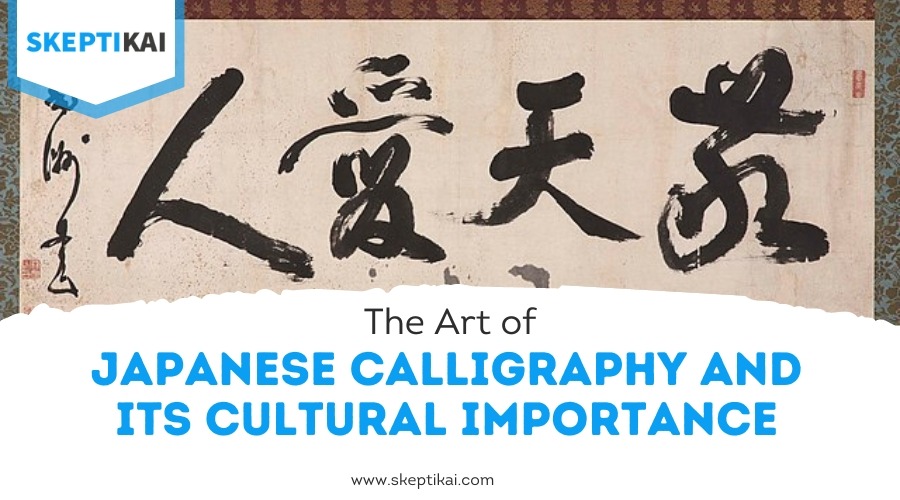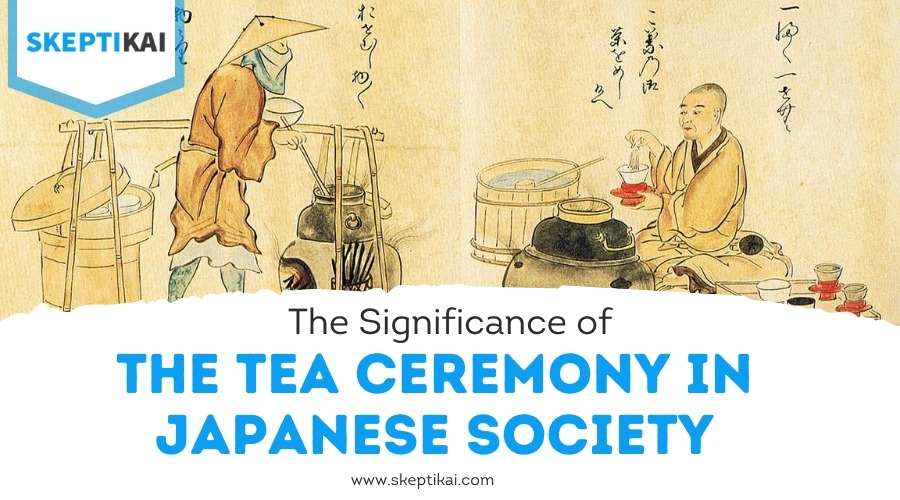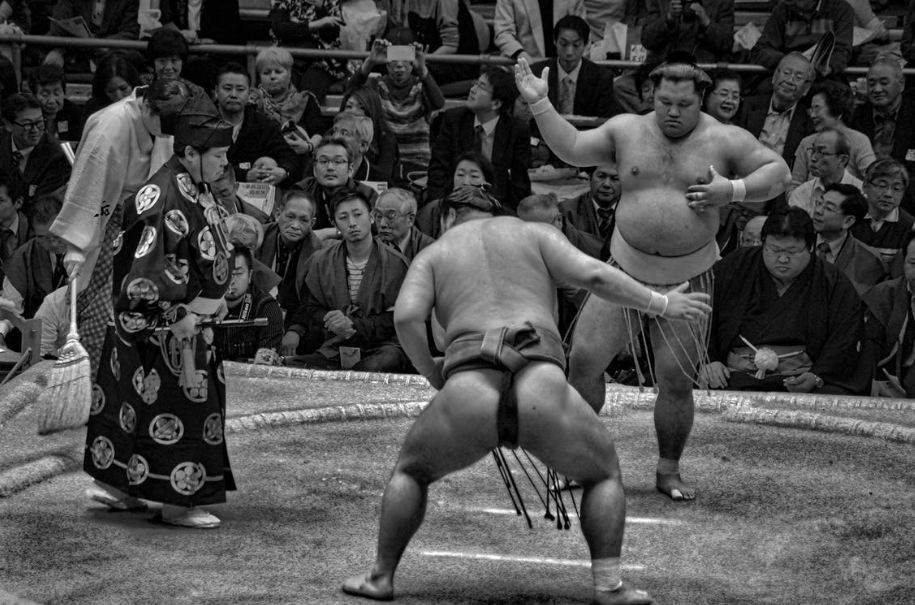How Does the Practice of Animism Still Influence Japanese Culture Today?

Animism greatly impacts Japanese culture today, evident in spiritual practices, daily life, and the arts. You'll find Shinto rituals honoring kami, nature spirits dwelling in mountains and rivers, affirming the ancient balance between humans and nature. Japanese festivals like Obon and Setsubun highlight spiritual connections through honoring ancestors and welcoming new seasons. Art and architecture often integrate natural motifs and materials, reflecting a deep respect for the natural world. Animism also inspires modern storytelling in anime and films, promoting ecological awareness and a harmonious existence with nature. There's so much more to uncover in Japan's rich cultural tapestry.
Shinto and Animistic Roots
Shinto, Japan's indigenous religion, frequently intertwines with animistic beliefs, forming a unique cultural tapestry. You might find yourself captivated by how kami beliefs permeate everyday life. Kami, often described as spiritual entities, inhabit numerous elements of nature, from towering mountains to flowing rivers. By accepting nature worship, you can foster a deeper connection with your surroundings, recognizing the sacred objects that represent these spiritual forces. Shinto has no sacred scriptures, and its principles are passed down through lived experiences and traditions, emphasizing the interconnectedness of beings and the balance between natural and spiritual domains.
Imagine participating in ritual practices that honor ancestral spirits and celebrate the changing seasons. These rituals not only strengthen your spiritual connections but also tie you to Japan's rich cultural heritage. As you engage in these traditions, you become part of a timeless narrative, where the past, present, and future are seamlessly woven together.
Seasonal changes play a significant role in Shinto, marking shifts in natural cycles that you can celebrate through festivals and ceremonies. By acknowledging these changes, you align yourself with the rhythm of nature, fostering a harmonious existence. This practice underscores a profound respect for the world around you, emphasizing the balance between humans and nature that is central to Shinto and its animistic roots. Accept this enduring cultural legacy and deepen your understanding of Japan's spiritual landscape.
Sacred Natural Sites

Japan's landscape is dotted with sacred natural sites, where spirituality and nature merge seamlessly. These sacred landscapes are deeply rooted in animism, with nature spirits believed to inhabit mountains, forests, and rivers. Many of these sites are intrinsically linked to Shinto Matsuri, which celebrate deities and rituals, further emphasizing the cultural and spiritual significance of these natural places. You can find many of these places revered as pilgrimage sites, drawing visitors seeking spiritual tourism and a chance to connect with the divine in nature.
When you visit these sacred groves, you'll notice the emphasis on cultural preservation and environmental stewardship. The Japanese take great care to maintain these landscapes, ensuring they're protected for future generations. Ritual offerings, such as sake or rice, are often left at shrines to appease the nature spirits and show gratitude for their blessings.
Experiencing these sites initially gives you insight into the harmonious relationship between humans and the environment, a balance that's integral to Japanese culture. By visiting these places, you're participating in a tradition that dates back centuries, where every step taken is a reminder of the sacredness of the earth. Regardless of you being a pilgrim or a curious traveler, these sacred natural sites offer a unique opportunity to reflect on the intertwining of spirituality and nature.
Traditional Festivals
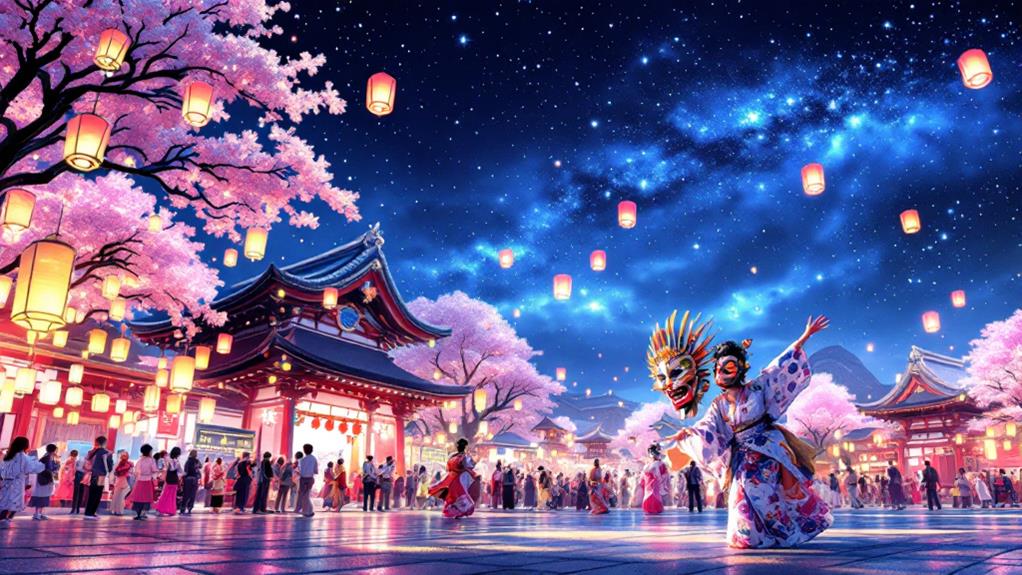
Traditional festivals in Japan offer lively glimpses into the country's rich cultural heritage, where the past and present blend seamlessly. When you attend these events, you'll witness the colorful interplay of animism, where seasonal celebrations and ancestral worship play vital roles. Festivals like Obon, held in mid-August, are perfect examples. During Obon, you'll see families honor their ancestors by lighting lanterns and visiting graves, believing that their spirits return to the world of the living. This festival is a poignant reminder of animism's influence, emphasizing the connection between the living and the spiritual domain.
Japan's seasonal celebrations, such as Setsubun and Hanami, also reflect animistic roots. Setsubun, celebrated in early February, involves rituals to drive away evil spirits and welcome spring. You might participate by throwing roasted soybeans to cleanse spaces and invite good fortune. Hanami, the cherry blossom festival, is another lively experience. You'll gather under blooming sakura trees, appreciating nature's transient beauty, which is deeply tied to animistic beliefs about the spirits residing in natural elements.
Spirituality in Daily Life

Beyond the colorful festivals, you'll find that animism shapes everyday life in Japan in subtle yet profound ways. Nature spirits are considered an integral part of daily life, often honored through small daily rituals. You might notice how these rituals cultivate mindfulness practices, helping individuals connect more deeply with their surroundings. From the careful arrangement of flowers to the appreciation of seasonal changes, these practices reflect a respect for nature's cycles and energies.
Within this framework, ancestral worship plays a critical role. Many families maintain altars in their homes, making offerings to their ancestors, which strengthens personal connections across generations. This practice fosters a sense of continuity and respect, grounding individuals in their heritage.
Spiritual symbols are woven into the fabric of daily life, from Shinto shrines dotting cityscapes to the talismans people carry for protection and luck. These elements encourage holistic living, where spiritual and physical well-being are interconnected.
Influence on Art

When you investigate Japanese art, you'll quickly notice the profound impact of animism on its aesthetics and themes. Animism, which emphasizes the spiritual essence in all things, deeply influences the way artists depict the world around them. You'll see this in the abundant use of nature motifs, which often convey a sense of respecting and venerating the natural world. Trees, mountains, rivers, and animals are not just decorative elements; they're imbued with spiritual significance, reflecting the belief that these entities possess souls.
In traditional Japanese art, folklore symbols play an essential role. These symbols often represent mythical creatures and deities, embodying the animistic idea that the world is alive with spirits. You'll encounter these in different forms, from the iconic dragons and foxes in paintings to the delicate representations of kami (spirits) in woodblock prints. These elements aren't just for visual appeal; they serve as a narrative device, connecting the viewer to the spiritual stories and beliefs that have shaped Japanese culture for centuries.
Architectural Harmony
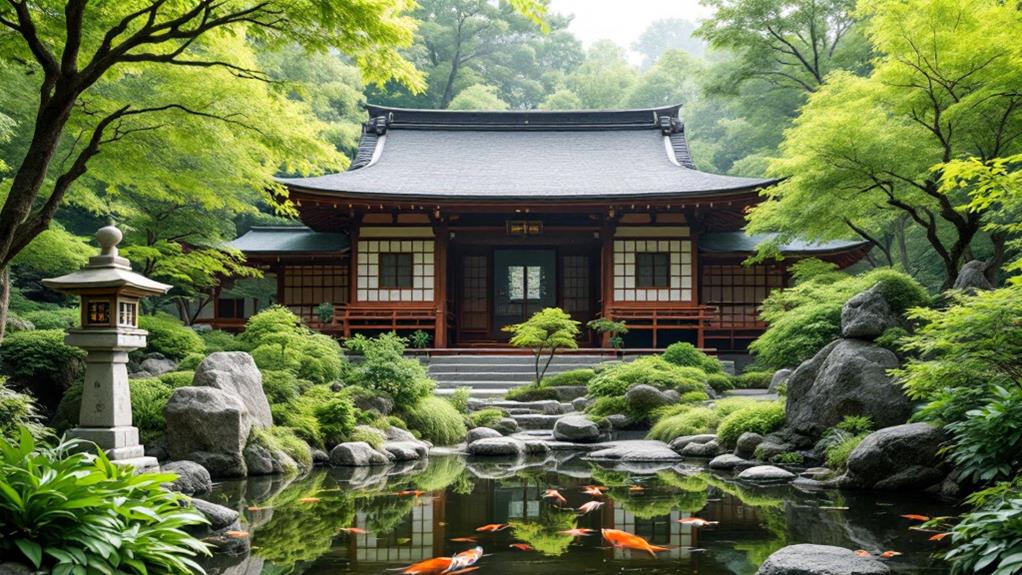
Japanese architecture beautifully embodies the principles of animism by achieving a harmonious balance between built environments and nature. You see this most clearly in shrine architecture, where every element is carefully crafted to coexist with the natural surroundings. The use of natural materials like wood and stone is paramount, reflecting an inherent respect for nature. These materials not only blend seamlessly with the environment but also develop gracefully over time, embodying the animistic belief that everything possesses a spirit.
When you walk through a traditional Japanese shrine, you're immediately struck by how the structures seem to emerge organically from the landscape. The architects thoughtfully consider the positioning of buildings to complement the natural elements, such as trees, rivers, and mountains. This intentional placement fosters a spiritual connection between you and the environment, encouraging a deep appreciation for the world around you.
Moreover, spaces within these structures often open into gardens or courtyards, inviting nature inside and creating a fluid shift between the interior and the exterior. By doing so, they reinforce the animistic idea that humans and nature are intricately linked. Through this architectural harmony, Japan honors its animistic roots, reminding you of the sacredness in everyday life.
Animism in Modern Media

Exploring animism in modern media reveals its pervasive influence in Japanese storytelling, particularly in anime and film. You can see this in how animism weaves mythical storytelling into narratives, breathing life and spirit into the environment and characters. Anime creators often infuse stories with a deep respect for nature, portraying landscapes and creatures as sentient beings with their own personalities and emotions. This approach to storytelling creates a rich tapestry where the world itself becomes a character, influencing the plot and the protagonists' paths.
Character symbolism plays a vital role in these narratives. You're likely to encounter characters who embody elements of nature, such as spirits or deities, each symbolizing different aspects of life or natural phenomena. These characters often guide or challenge human protagonists, reflecting animism's belief in the interconnectedness of all things. Films like Hayao Miyazaki's "Princess Mononoke" showcase this beautifully, where forest spirits and gods highlight the balance between humans and nature.
Ecological Awareness
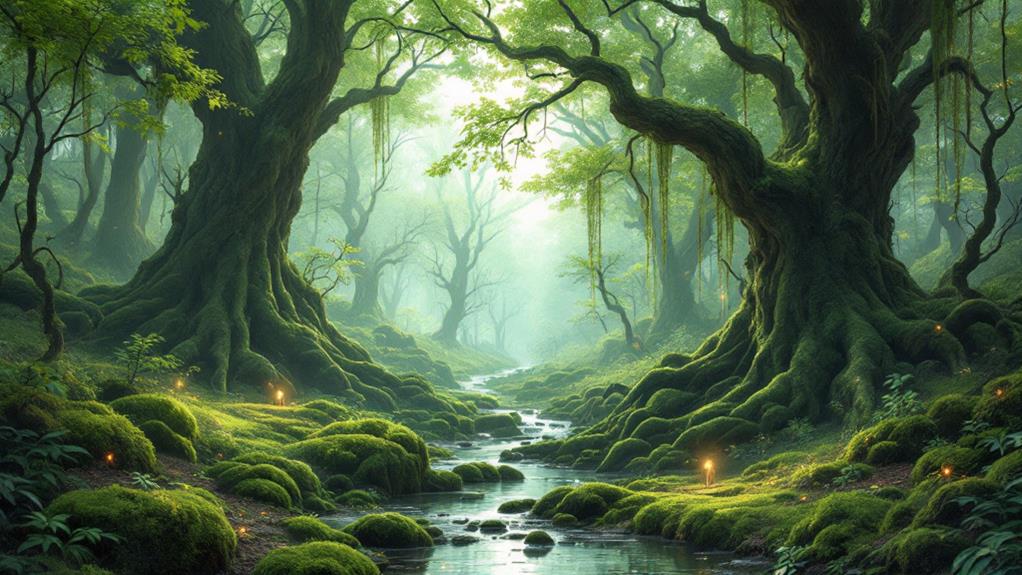
In the midst of growing environmental challenges, Japanese culture's animistic roots foster a profound ecological awareness that permeates daily life. You'll notice how this spiritual ecology is not just a belief system but a guide for action and thought. Animism teaches that every element of nature possesses a spirit, which encourages a holistic worldview and fosters a deep respect for the environment. This perspective naturally leads to strong nature conservation efforts and a commitment to biodiversity preservation.
You can see this in Japan's emphasis on cultural sustainability and the integration of indigenous knowledge. Traditional practices, such as Satoyama, demonstrate how communities live in harmony with their surroundings, balancing human needs with those of nature. These practices embody ecological spirituality, promoting environmental ethics that prioritize the well-being of all living things.
Rituals and Ceremonies
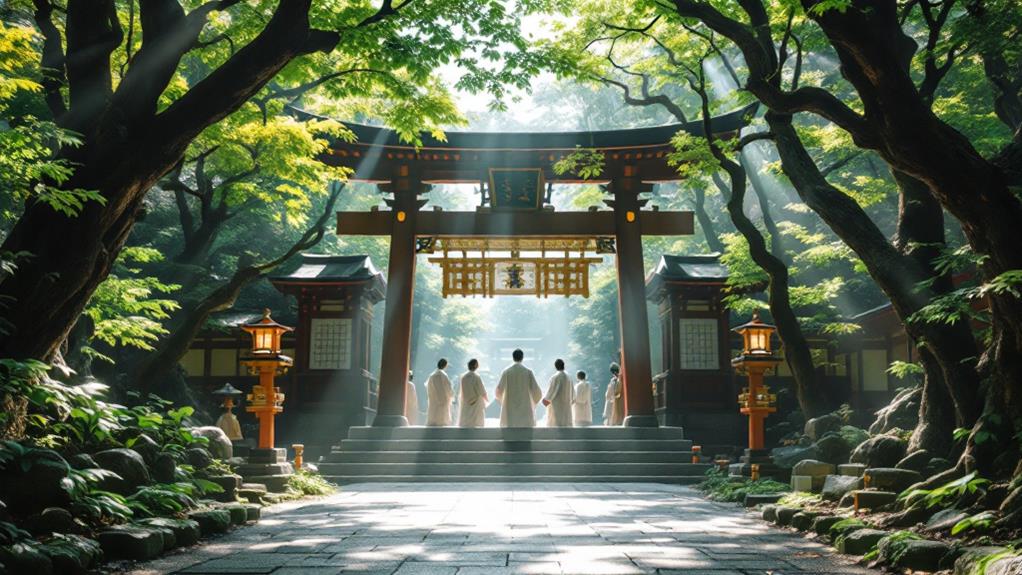
Countless rituals and ceremonies in Japan draw from animistic beliefs, weaving spiritual significance into the fabric of everyday life. You'll find that ancestor worship is an essential part of family traditions, where respect and gratitude for past generations are expressed through offerings exchange. These offerings often include food and symbolic items to honor the spirits of departed loved ones. Seasonal ceremonies are held to celebrate cycles of nature, acknowledging nature spirits that play a fundamental role in ensuring harmony and prosperity.
In many communities, purification rituals are practiced to cleanse the body and spirit, preparing participants for meaningful events or changes. During these rituals, sacred objects such as amulets or talismans may be used to channel spiritual energy and protection. Harvest festivals exemplify the reverence practices towards the earth, where communal gatherings allow you to connect with others while expressing gratitude for a bountiful harvest.
These ceremonies often involve intricate dances, music, and the sharing of food, strengthening communal bonds. By participating in these rituals, you become part of a living tradition that honors both the natural world and the spirits that are believed to dwell within it.
Community and Nature
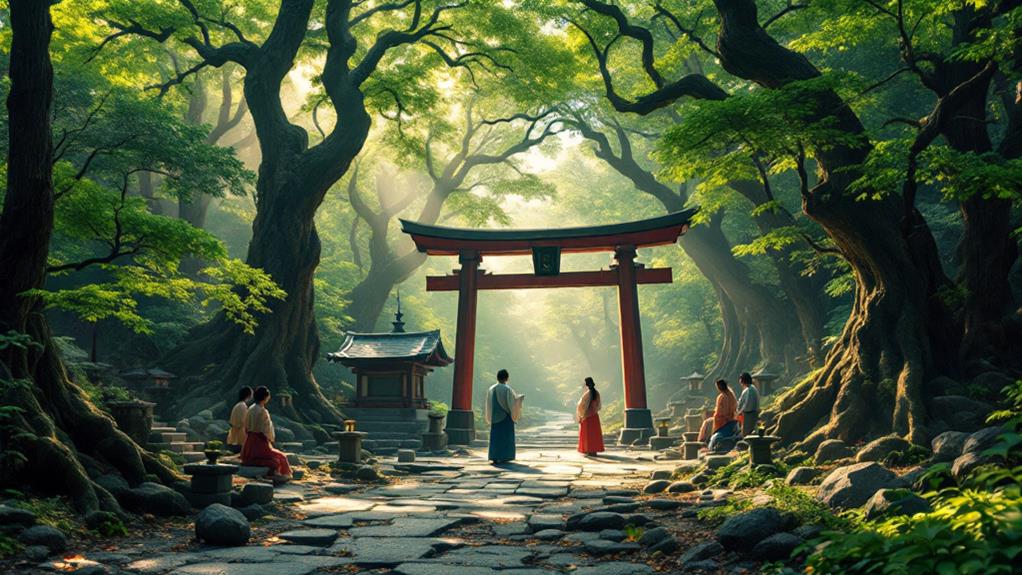
Rituals and ceremonies in Japan not only foster spiritual connections but also strengthen the ties between community and nature. When you participate in community rituals, like the annual rice planting festivals, you're not just honoring tradition; you're actively engaging in a practice that underscores the community's reliance on and respect for nature. These events are a reminder of the interconnectedness of life, highlighting how each person's actions impact the environment.
In Japan, animism encourages you to see nature as a living entity deserving of respect and protection. This belief naturally leads to a culture of nature conservation. Local communities often organize clean-up activities and tree-planting events, reinforcing the idea that caring for nature is a communal responsibility. By involving everyone, from children to the elderly, these activities instill a sense of duty and pride in preserving natural surroundings.
As you engage in these rituals and practices, you contribute to a shared understanding that nature is not just a resource to be used but a partner in life's expedition. This perspective cultivates a deep-rooted bond between people and the environment, ensuring its care for future generations.
